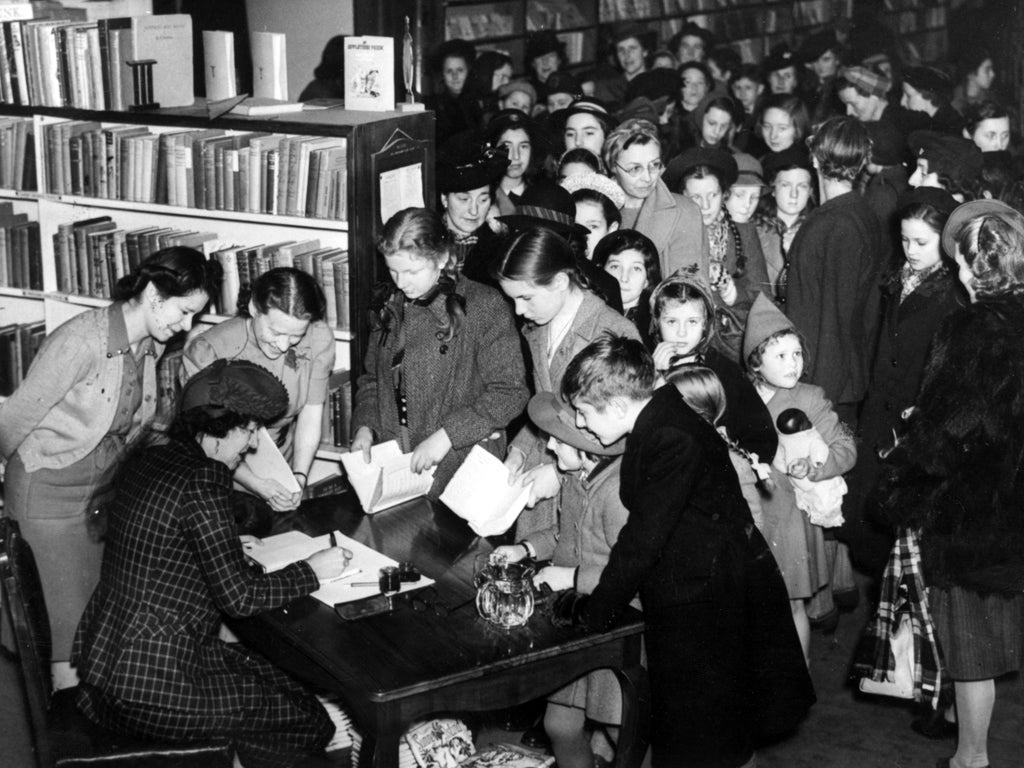World Book Day: I'd turn to JK Rowling's children's books over Enid Blyton's books any day
I was sniffy about the exploits of Harry Potter until I began reading the books to my daughter at bedtime, at which point I became a total convert

Considering all the flak Enid Blyton’s taken in the last few decades, it’s slightly surprising that a poll conducted to mark World Book Day found that in the Top Ten children’s books compiled from parental preferences, the Famous Five and Secret Seven series were at the top. Black Beauty cantered home in third place, and there’s nothing at all from the last half-century, Roald Dahl’s 1964 Charlie and the Chocolate Factory being the newest.
The children’s top 10 had a traditional feel to it, too, with CS Lewis, a bit of Blyton and lots of Dahl (plus a gruffalo and a very hungry caterpillar). But as you might imagine, perched on top – by a large margin, I’m guessing – are the exploits of a certain teenage wizard. I can’t say I’m surprised. Blyton may be revered by some and despised by others, but her books – a much-loved staple of my own childhood – feel like pale, insignificant things compared to the richness of JK Rowling’s work.
Without having read a word, I was sniffy about the exploits of Harry Potter and his chums until I began reading the books to my daughter at bedtime, at which point I became a total convert. Though the prose is belts-and-braces rather than sparkling, the wealth of detail, the humour, the deft characterisations and the huge narrative arc take them way out of Blyton’s league.
My daughter and I read the Potter series before we touched any Blyton; it was like going from haute cuisine to beans on toast (albeit with lashings of ginger beer). But her books are amiable enough and they do have their uses, if only to show your children how far women have come since Blyton’s time.
The key to reading Blyton with your children is to treat them as period pieces. We read the Adventure series (The Island of Adventure, The Castle of Adventure and so on), and my nine-year-old was staggered by the depiction of females. There is, on the plus side, feisty Dinah, a self-confident match for any lad, though to bring her down to size she’s given a flaw you’d only find in a mere girl, a fear of the creepy-crawlies collected by her brother Philip.
But Lucy! Weak, pathetic, sissy, girly Lucy! For my daughter and me “What would Lucy do?” became a standing joke, and I began to read her dialogue in an increasingly pathetic voice, always on the verge of tears. Give me Hermione Granger any day, or the powerful and authoritative Minerva McGonagall true role models for the young women of today.
Another World Book Day survey, meanwhile, concludes that on average half the books in every home remain unread – another finding that doesn’t surprise me. I’m sure getting on for that proportion have yet to be opened in my house – but, I’m convinced, they will be. I’ve always looked at buying books like laying down wine, or having a savings account – we accumulate intellectual capital, on which we can draw at any time. But then my partner says I should be on one of those hoarder programmes, so feel free to ignore me.

Join our commenting forum
Join thought-provoking conversations, follow other Independent readers and see their replies